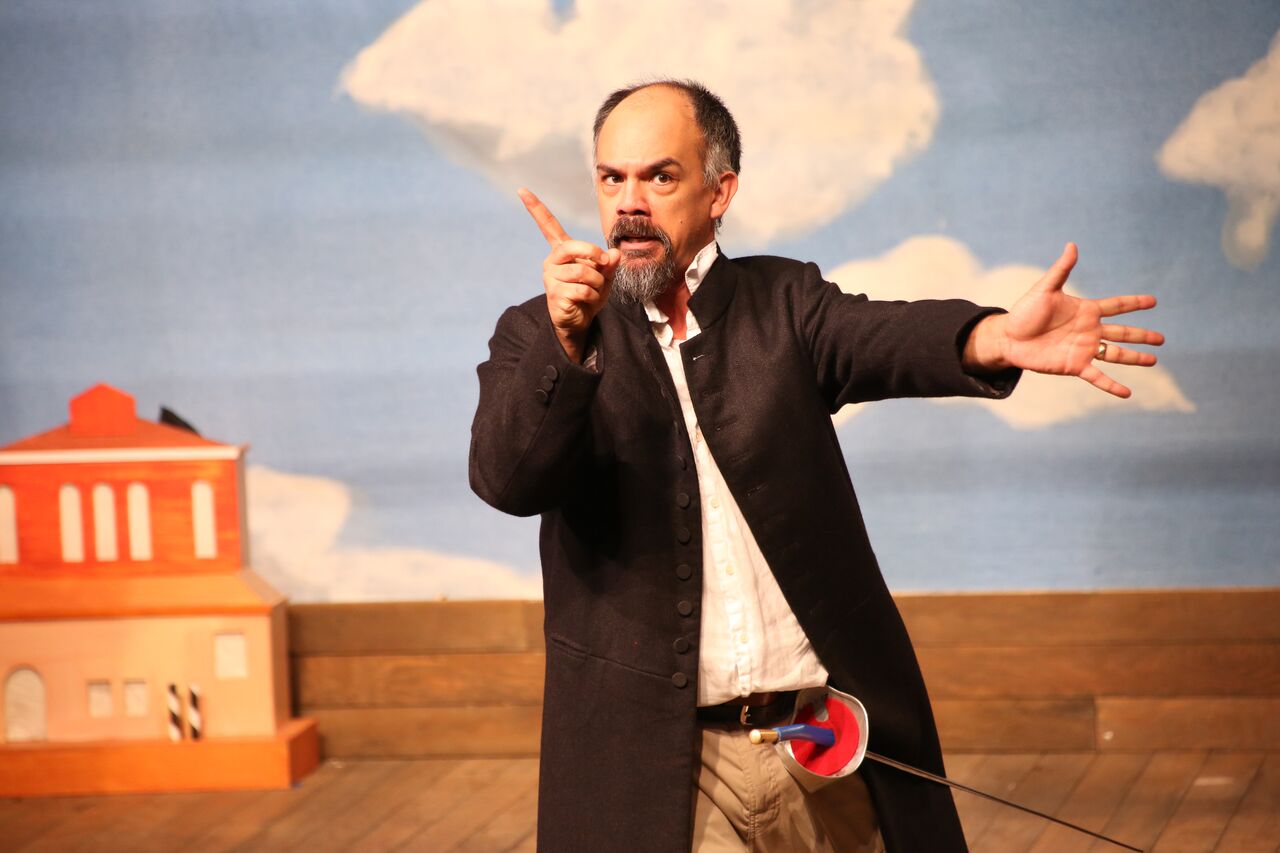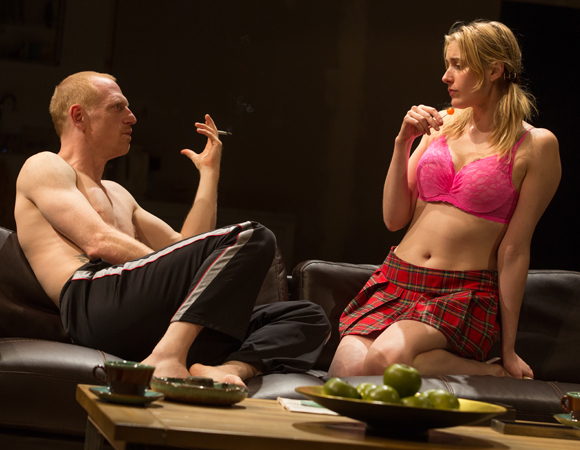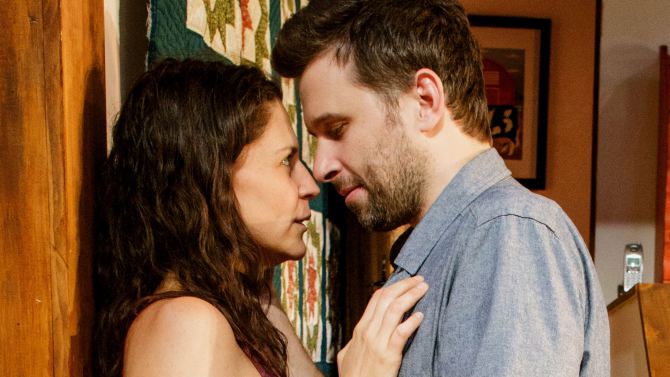NY Theater Review by JK Clarke
The last several years in New York have been a remarkable time to be a theater lover. Particularly if one is a Shakespeare aficionado. Always relevant and relatable, Shakespeare has experienced a surge in New York at every level: from community theater to top level professional productions. Though there have been a large number of well-done productions among these, a few have reached the gold standard, notably the Globe Theater’s Twelfth Night and Richard III productions. Now the Public’s Shakespeare in the Park presentation of King Lear can be added to that pantheon. Most productions of Lear (and there have been at least two other major Lears this year, plus a couple local theater versions), have one or two incredibly strong components. One role is great, and the rest are average or less. This production is the opposite. It is composed of strong elements across the board with few, if any, weaknesses. Just when you feel amazed by one performance, another wows even more.
The centerpiece, of course, is the amazing and much celebrated John Lithgow as Lear. We know him from memorable film and television roles, and from the stage, too. What we connect to in Lithgow is the raw emotion we see in his intense, expressive blue eyes: if he’s delighted, we’re happy; if he’s suffering, we feel pain; and if he’s enraged, we’re terrified. But this is not the John Lithgow who bears a look of eternal surprise. This man is a white haired, bearded king. A man who has ruled Britain for decades with an iron hand and now, in his declining years, has decided—mistakenly, it turns out—to divide his kingdom among his three daughters. Two of these daughters are heartless and Machiavellian. The other is an innocent who is unflappably, tragically earnest.
King Lear is chiefly a tale of miscalculation, betrayal and lack of vision (of all varieties). Lear (initially) does not understand that his youngest and most preferred daughter Cordelia (a pleasingly layered Jessica Collins) is so honest that she will not indulge in platitudes; and he falls for the honeyed speeches of Regan (powerful Jessica Hecht) and Goneril (Annette Bening) while raging against Cordelia, banishing her from the kingdom. Meanwhile, one of his main lieutenants, the Earl of Gloucester (the superb Clarke Peters), is rather easily duped by his bastard son Edmund (Eric Sheffer Stevens) into believing that his legitimate son has betrayed him. Neither of these men can see the deception that seems, to us anyway, perfectly plain. And for it, they will both lose everything.


Once thrown into the storm with his Fool (played brilliantly by Steven Boyer as a mediator and voice of reason — even Cordelia realizes this is a Fool who knows what’s right) and Caius, the disguised, banished Earl of Kent (Jay O. Sanders), Lear happens upon Gloucester’s banished son Edgar (Chukwudi Iwuji) who is in hiding as the beggar Poor Tom. The beleaguered Lear realizes, in his madness, the genius of the starving, naked beggar: “First let me talk with this philosopher. What is the cause of thunder? . . . What is your study?” Poor Tom/Edgar is beaten down, too, at this point, and enlightened to the wickedness of man: “How to prevent the fiend, and to kill vermin,” he replies. While both are seemingly speaking in riddles to each other, more importantly, they are speaking from heartbreak. And we see the anguish crashing over the face of Iwuji. Lithgow’s Lear is right there with him, simultaneously aware and mad, feeling every fiber of Poor Tom’s loss and the injustice of inequality like he has never seen it before. A more sympathetic and heartbreaking Edgar there has never been.
As the drama winds down and hurtles toward its bloody end, Lear and Gloucester, too, begin to see their folly, realizing it’s too late to change anything. Blinded Gloucester dies of heartbreak upon learning the son he cast out is there taking care of him, anonymously as a homeless beggar. And Lear, while he is reunited with Cordelia (and it takes some time, for he is mentally lost by the time she finds him “Who is it that can tell me who I am?” he wails), it is only temporary, for they are captured by his other daughters’ soldiers. Broken, and realizing everything is over, he tries nostalgia:
No, no, no, no! Come, let’s away to prison:
We two alone will sing like birds i’ the cage;
When thou dost ask me blessing. I’ll knee down,
And ask of thee forgiveness: so we’ll live,
And pray, and sing, and tell old tales and laugh . . .
But their time is cut short, and the penultimate scene, one of the most famous in all of Shakespeare, unfolds. Lithgow’s Howl scene, as he carries Cordelia’s body out to the stage (he is a big man, one of few who’ve had the strength of late to do so), is chillingly and touchingly followed through with his death scene, in which he too dies of heartbreak. If you can see through the tears welled up in your eyes in that moment, as Lear slumps over Cordelia’s body, whimpering in agony, you’ll also see the stricken faces of the other characters who look just as broken and pained as we are.
It takes quite some time after exiting the lovely Delacorte theater and walking out through Central Park, to recover one’s wits and to shake off the weight of this tragedy. But once one does, it is exhilarating to realize what a performance it was. This is a Lear for the ages, not just thanks to Lithgow, but to an outstanding cast and director. Stand in line every day for tickets if you have to. Just don’t miss it.
King Lear. Through August 17 at The Delacorte Theater (Central Park near 81st Street and Central Park West entrance). www.publictheater.org
*Cast Photos: Joan Marcus

























